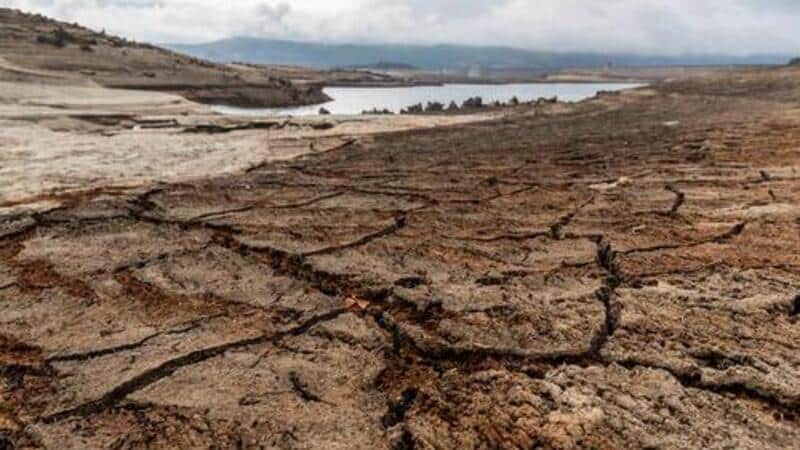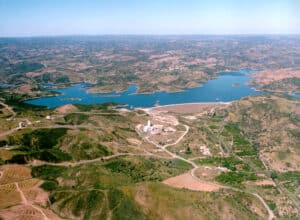Money to go on portable desalination plants/ waste water re-use, among other measures
The Algarve’s agricultural sector will need support totalling €100 million if the current scenario (of drought) and planned water supply cuts continue, José Apolinário, president of the CCDR (Regional Coordination and Development Commission) has estimated today.
Speaking to Lusa, Apolinário said his entity has prepared a working proposal, after listening to around 20 organisations in the sector, which it presented to the government last week.
The proposal identifies the short-term support needed for the sector to cope with the reduction in water availability.
“We have identified a first survey of losses with impacts in 2024 and 2025”, he said. “Our working basis is that, with current water availability, the sector will need support of around €100 million”.
Measures – based on European funds and direct aid – could involve a mix of portable desalination plants, the construction of ponds, the rehabilitation of boreholes and use of wastewater. But compensation would still be required for “the foreseeable loss of production”.
Among support measures contained in the proposal are non-repayable financial support, lines of support for cash flow and debt restructuring, credit moratoriums, temporary exemptions from social security payments and/or fees in public irrigation perimeters.
“Our aim is to help guarantee short-term responses – and in the short term we’re talking about 2024 and 2025 – that will enable the sector and the future of agriculture in the Algarve to be maintained,” summarised the CCDR boss.
The proposal was also sent to the ministers of the economy and territorial cohesion.
According to Apolinário, two of the sectors most affected and which are “most dependent on water in the immediate future” are citrus fruit production and the ornamental plants and flowers sector, which has a significant volume of exports.
He noted that the estimate of the amount needed for support and investments can be adjusted depending on “short-term reaction capacity”, with the greatest impact expected in 2025.
“The impacts of the reductions in water availability will be seen at the end of 2024 and in 2025, so every drop counts,” he said, adding that the increase in water availability requires “the mobilisation of everyone so that agriculture can overcome difficulties in the short term and have prospects for the future”.
To this end, José Apolinário called for an effort by all organisations to reduce water consumption in non-domestic use, such as watering gardens and green spaces, in order to free up more water for agriculture.
According to the regional leader, the agriculture sector in the Algarve represents 9.2% of the nation’s Gross Added Value Added, approximately 7% of the region’s companies and 13,700 direct jobs.
On Wednesday, the government announced the Algarve will see water cuts of 25% in agriculture and 15% in the urban sector, which includes tourism, in order to preserve water reserves and cope with the drought.
The need to impose water cuts in the Algarve was decided by the Permanent Commission for the Prevention, Monitoring and Follow-up of the Effects of Drought. According to minister for the environment and climate action, Duarte Cordeiro, the measures are mandatory given the situation in which capacity of Algarve reservoirs is at 25%, compared to 45% at the same time last year.
Source material: LUSA


























